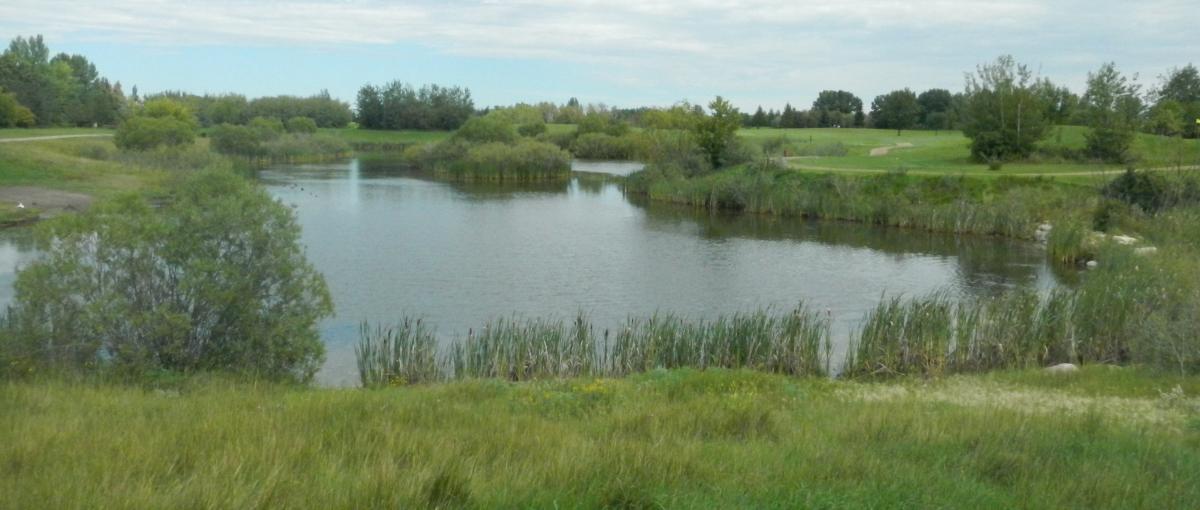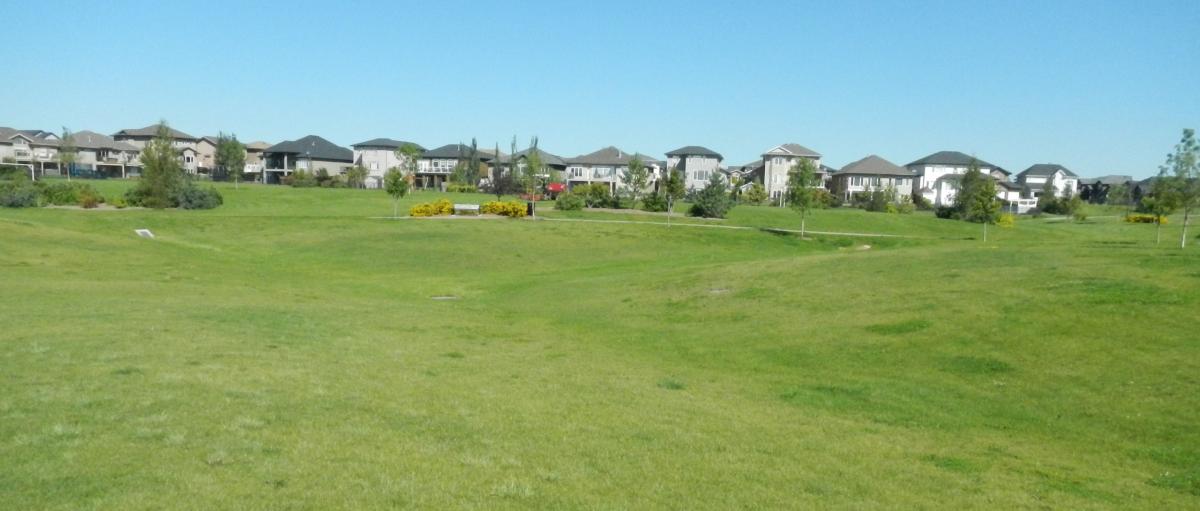Storm Ponds
Floating Treatment Wetland installation at Kensington 1 Storm Pond
The Saskatchewan Association of Watersheds (SAW), in partnership with the City of Saskatoon and others, is installing a floating treatment wetland at the Kensington 1 storm pond location. The stormwater pond will be tested annually for five years by SAW following installation to track the effect of the floating treatment wetlands on water quality within the storm pond. For full project details, please visit saskwatersheds.ca.
The City of Saskatoon has 32 wet ponds and 10 dry ponds. These ponds are an essential part of the storm water system as they help to manage run-off from snow melt and rain events, and protect our city from flooding.
Wet ponds hold water at all times. During rain events and spring melt, the water level in these ponds rises as run-off is diverted here. Wet ponds are great additions to neighbourhoods as they protect properties from flooding and often facilitate recreational paths, bird watching, and skating.

Dry ponds are spaces that appear to be open fields but they fill up with storm water and act as essential temporary storage when it rains. Similar to wet ponds, water is directed from properties and roads into dry ponds when it rains. These areas slowly release water to the storm sewer when there is capacity until they dry out completely. These spaces can often be used for recreation similarly to other fields in dry weather, but it is very important to vacate as soon as it begins to rain and the area begins to fill with water.

